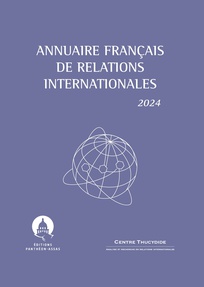Un travail récent montrerait qu'en Chine même la rentabilité des investissements chinois en infrastructure serait très faible et que les bénéfices pour la croissance chinoise seraient très limités. La question qui se pose serait donc : quid des travaux d'infrastructure réalisés par des entreprises chinoises pour le compte des pays africains ? Cette interrogation rejoint la nôtre dans les deux notes intitulées Chine-Afrique : des chiffres qui donnent à réfléchir (1) ![]() et Chine-Afrique : des chiffres qui donnent à réfléchir (2)
et Chine-Afrique : des chiffres qui donnent à réfléchir (2) ![]() .
.
Does infrastructure investment lead to economic growth or economic fragility? Evidence from China
Atif Ansar, Bent Flyvbjerg, Alexander Budzier and Daniel Lunn
Oxford Review of Economic Policy, 2016, 32 (3): p. 360-390.
Résumé :
China’s three-decade infrastructure investment boom shows few signs of abating. Is China’s economic growth a consequence of its purposeful investment? Is China a prodigy in delivering infrastructure from which rich democracies could learn? The prevalent view in economics literature and policies derived from it is that a high level of infrastructure investment is a precursor to economic growth. China is especially held up as a model to emulate. Politicians in rich democracies display awe and envy of the scale of infrastructure Chinese leaders are able to build. Based on the largest dataset of its kind, this paper punctures the twin myths that (i) infrastructure creates economic value, and that (ii) China has a distinct advantage in its delivery. Far from being an engine of economic growth, the typical infrastructure investment fails to deliver a positive risk-adjusted return. Moreover, China’s track record in delivering infrastructure is no better than that of rich democracies. Investing in unproductive projects results initially in a boom, as long as construction is ongoing, followed by a bust, when forecasted benefits fail to materialize and projects therefore become a drag on the economy. Where investments are debt-financed, overinvesting in unproductive projects results in the build-up of debt, monetary expansion, instability in financial markets, and economic fragility, exactly as we see in China today. We conclude that poorly managed infrastructure investments are a main explanation of surfacing economic and financial problems in China. We predict that, unless China shifts to a lower level of higher-quality infrastructure investments, the country is headed for an infrastructure-led national financial and economic crisis, which is likely also to be a crisis for the international economy. China’s infrastructure investment model is not one to follow for other countries but one to avoid.
Lire à http://oxrep.oxfordjournals.org/content/32/... ![]()
China’s great wall of debt
Atif Ansar and Bent Flyvbjerg
East Asia Forum, 28 novembre 2016
[...]
Unless China shifts to fewer and higher-quality infrastructure investments, the country is headed for an infrastructure-led national financial and economic crisis, which is likely to spread to the international economy.
This reality is illustrated by a new analysis of 95 large Chinese road and rail transport projects and 806 transport projects built in rich democracies. A typical Chinese infrastructure investment suffers cost overruns and benefit shortfalls so large that they destroy economic value. In China actual infrastructure construction costs are on average 30.6 per cent higher than estimated costs, in real terms, measured from the final business case — which is in line with global trends. The evidence is overwhelming that costs are systematically biased towards underestimation.
With respect to traffic performance, demand in China represents two extremes. A majority of the routes witness paltry traffic volumes but a few routes are highly congested. Too little and too much traffic of this magnitude indicates significant misallocation of resources.
In our sample, over half the projects had an ex post benefit-to-cost ratio lower than 1.0, meaning that these projects were economically unviable at the outset of their operational lives. Less than a third of our sample could be considered genuinely economically productive.
The pattern of cost overruns and benefit shortfalls in China’s infrastructure investments is linked with China’s growing debt problem. We estimate that cost overruns have equalled approximately one-third of China’s US$28.2 trillion debt pile. China’s debt-to-GDP ratio stands at over 280 per cent, exceeding that of many advanced economies and all developing economies for which data is available.
[...]












